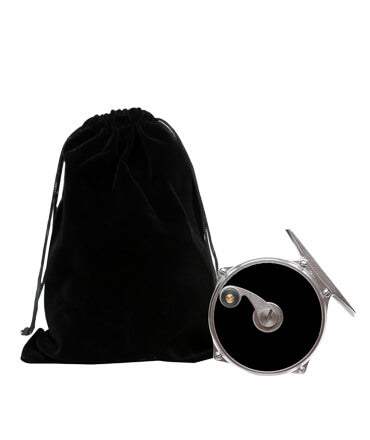Fly Line: Essential Guide to Switch Lines for Beginners and Trout Fishing
Switch fly lines offer a unique advantage for anglers seeking versatility in their fly fishing experience. The right switch fly line can significantly enhance your casting distance and presentation, making it easier to target various species throughout the season. Whether I'm transitioning between floating and sinking lines or experimenting with weights, a well-chosen switch line can adapt to diverse fishing conditions, ensuring that I am always prepared.

For beginners, selecting the best switch fly lines can be daunting, but it doesn’t have to be. I recommend starting with a floating switch line for calm water conditions, as it allows for delicate presentations and can be easily manipulated for strikes. Once I gained confidence, I explored sinking lines for deeper water, discovering their effectiveness in reaching fish that often elude surface offerings.
When targeting trout, I've found that certain top-rated switch lines deliver exceptional results. Choosing the right line weight and style tailored to the specific environment can make a substantial difference. Understanding these nuances not only boosts my catch rate but also enhances my overall experience on the water.
Understanding Fly Lines and Their Importance in Fly Fishing
Fly lines are crucial for effective fly casting. Their design influences casting style, line control, and presentation. Understanding line taper and weight is essential for matching them with the right rod.
Key Aspects of Fly Line Tapers
Taper refers to the gradual change in thickness of a fly line, which affects how it behaves in the water. The most common tapers include weight forward, double taper, and level lines.
-
Weight Forward Taper: This design concentrates weight toward the front, enhancing distance and ease of casting. It is useful for beginners and often recommended for various conditions.
-
Double Taper: This design has equal weight on both ends, allowing for versatile casting and a delicate presentation. It's ideal for smaller streams and short casts.
-
Level Line: This type has a uniform diameter. While less popular, it is suitable for specific scenarios.
Choosing the right taper can greatly enhance line control and presentation.
The Role of Line Weight and Rod Pairing
Selecting the appropriate line weight is vital. It should match the rod weight, usually indicated in grains. A line that is too light may not load the rod adequately, affecting casting efficiency.
For example, if I use a 5-weight rod, I should pair it with a line in the 5-weight range. This ensures optimal performance and flexibility in casting styles.
Additionally, matching the line with the intended fishing application matters. A sinking line may be necessary for deep waters, while a floating line suits surface presentations. Adjusting densities aids in reaching targeted depths efficiently.
Understanding these key points helps in choosing the right equipment for a successful fly fishing experience.
Selecting Your Fly Line: Floating Versus Sinking Varieties
Choosing between floating and sinking fly lines is crucial for ensuring effective presentations and successful fishing. Each type has its applications, advantages, and drawbacks. The right choice can significantly impact your fishing experience.
Pros and Cons of Floating Fly Lines
Floating fly lines are highly versatile and ideal for many fishing scenarios, particularly when using dry flies or surface presentations. They allow for excellent control and accurate presentation of the fly on the surface.
Pros:
- Versatility: Suitable for various techniques, including nymphing and fishing with streamers.
- Ease of Use: Simple to cast, making them beginner-friendly.
- Visibility: Easy to track on the water.
Cons:
- Limited Depth: Not ideal for deeper water fishing, as they keep the fly at the surface.
- Wind Sensitivity: More affected by wind, which can complicate casting.
When to Choose Sinking or Sink-Tip Lines
Sinking fly lines, including intermediate and full sinking options, excel in reaching deeper water where fish are often found. Sink-tip lines provide a blend of floating and sinking characteristics, offering versatility.
When to Use Sinking Lines:
- Weighted Flies: Best for techniques involving streamers or nymphs that require depth.
- Cold Water: Useful for fishing in colder conditions where fish are deeper.
- Structure: Effective around submerged structures or in fast currents.
Sink-tip lines work well when targeting fish that respond to weighted flies while still allowing for some surface action. By selecting the appropriate line for your fishing conditions, I can maximize my chances of success.
Top Recommendations for Switch Fly Lines

Selecting the right switch fly line improves my casting efficiency and enhances my overall fishing experience. Here are my top recommendations that cater to both beginners and seasoned anglers targeting trout.
Best Switch Fly Lines for Beginners
For those new to switch fly fishing, I recommend starting with lines that offer ease of use and good performance. Cortland's 444 Gold Switch Fly Line is a solid choice. It features a shorter head length, which makes it easier for beginners to learn casting techniques.
The Airflo Skagit Compact line is another excellent option due to its smooth casting and line control. It has a grain weight designed for shorter rods and offers good sensitivity, making it easier to detect strikes.
Finally, the Scientific Anglers Amplitude MPX offers versatility. Its floating design is ideal for various conditions, and the build quality ensures durability while maintaining superior performance in diverse river scenarios.
Leading Switch Fly Lines for Trout Fishing
When targeting trout, I focus on lines specifically designed for precision and sensitivity. The Orvis Switch Line is highly regarded. It features a unique taper that enhances casting distance and accuracy, essential for fooling wary trout.
The Scientific Anglers Frequency Switch Line is another standout. It offers a balanced performance with great line control, which is crucial when navigating different water types. The floating head allows for excellent presentation, while its construction ensures longevity.
Lastly, the Airflo Switch Intermediate Line excels in varied water conditions. This sinking option helps target trout at various depths, and its shorter head profile aids in quick loading, optimizing casting even in challenging scenarios.











